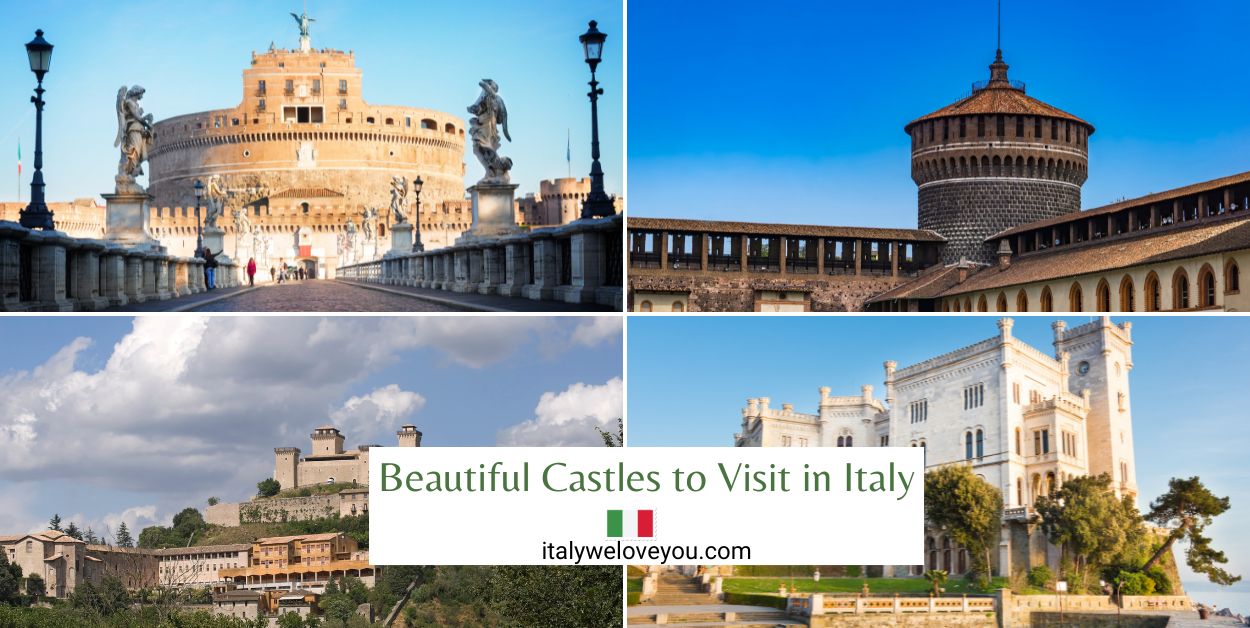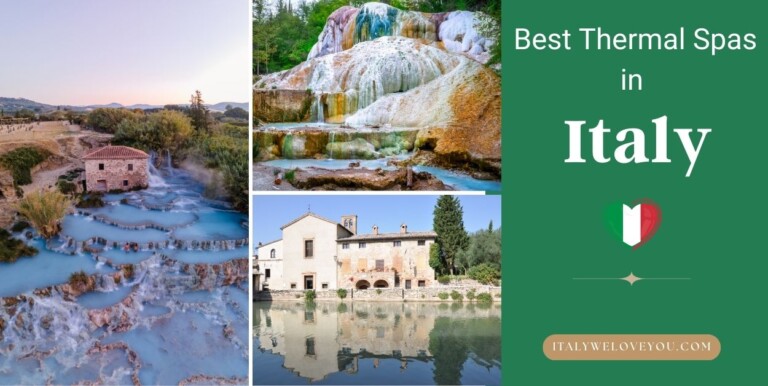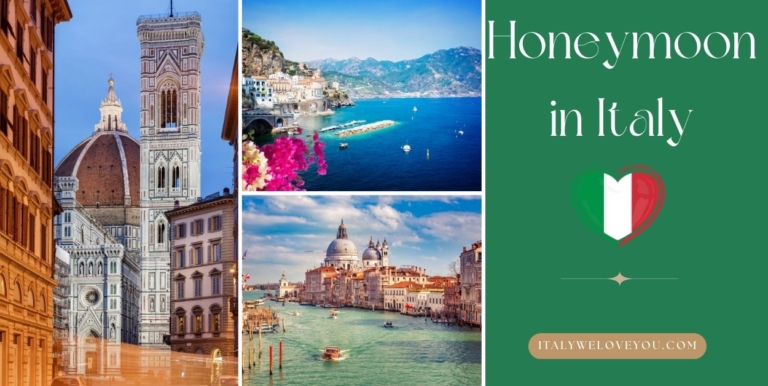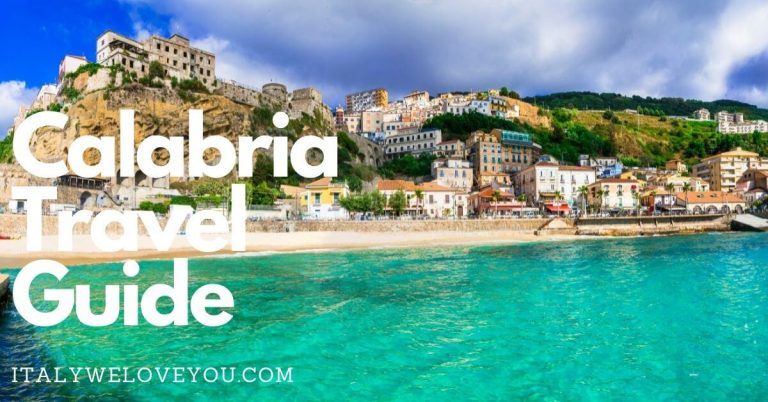17 Most Beautiful Castles to Visit in Italy
Italy is full of castles and fortresses visited every year by thousands of tourists, eager to learn more about their history and their mysteries while they stroll through the great halls and silent courtyards. Great towers perched on the top of high slopes, mighty stone fortresses, and majestic manors surrounded by vast landholdings are capable of catapulting us into a world of other times, between history and knightly legends. Castles are places that always retain something mysterious and that have a lot to tell. So let’s see which are the most beautiful castles in Italy.
Scaliger Castle of Malcesine – Veneto
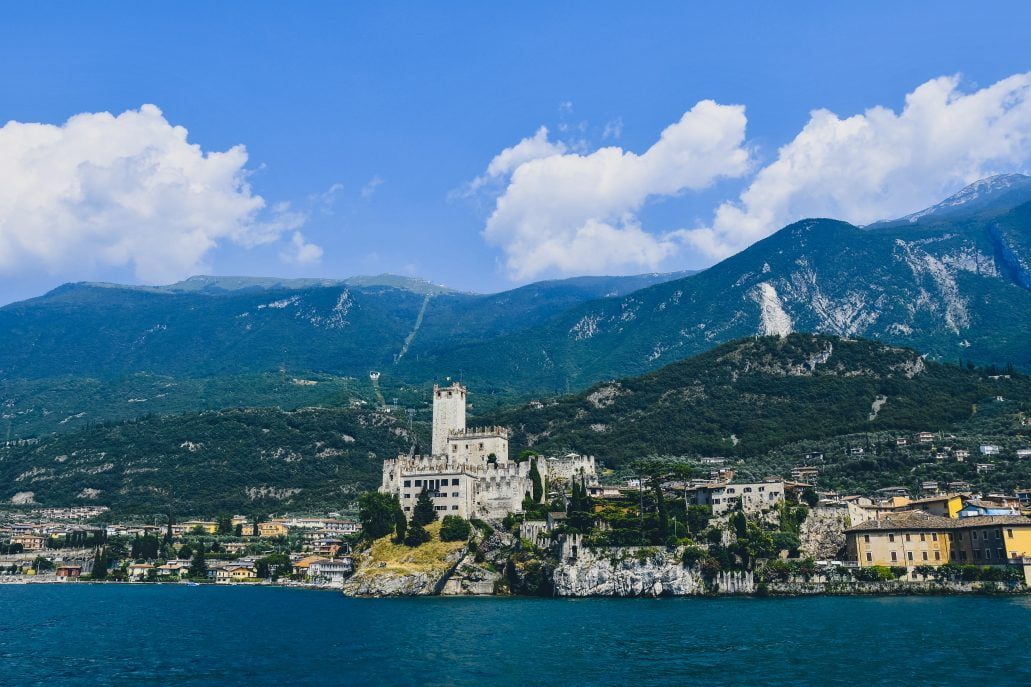
This medieval castle stands on a rocky outcrop in Malcesine, on the shores of Lake Garda. Rebuilt by the Scaligeri in the XIII century on a previous building, the castle keeps with the typical dovetail battlements. It also has a privileged position because it enjoys a wonderful view of Lake Garda. The castle, which passed over the centuries under the dominion of various powers, was also made famous by the writer Goethe’s drawings and descriptions in his “Journey to Italy” at the beginning of the XIX century. A Natural History Museum has been set up inside the building at the current entrance to the castle. In addition, the castle also houses a museum dedicated to Goethe.
Scaligero Castle of Sirmione – Lombardy
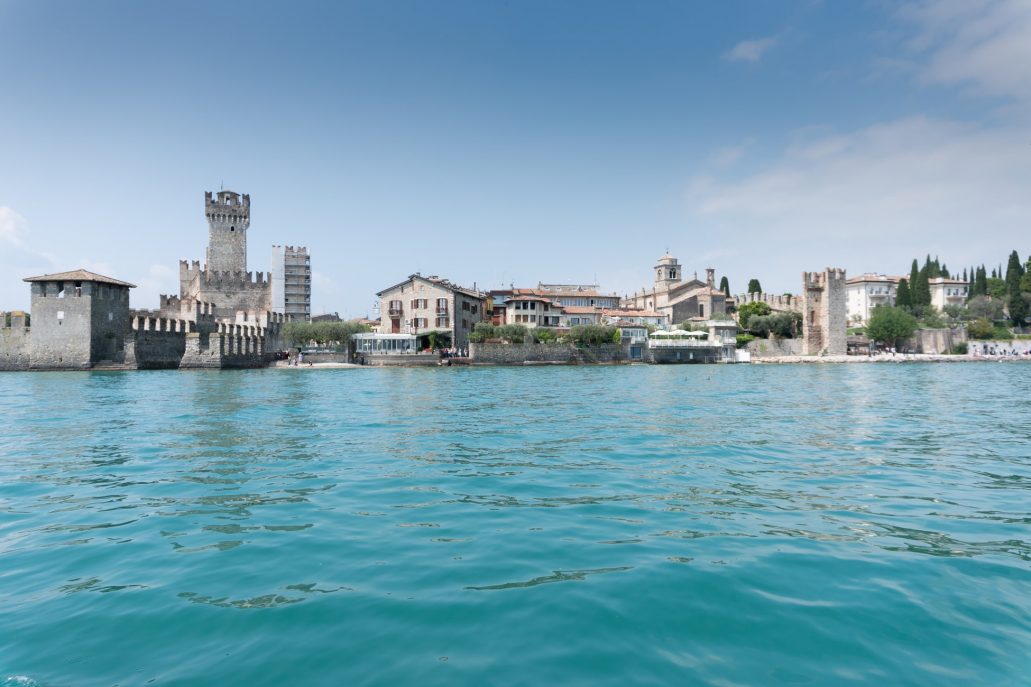
Also, on Lake Garda, you can admire another Scaligero castle: that of Sirmione, in Lombardy. Its historic center is a peninsula stretching out over the lake and offers breathtaking views. The majestic and beautiful castle dominates the landscape and is one of the best-preserved examples of lake fortification. It is probably dating back to the XIII century. The fortress of Sirmione is one of the most beautiful castles in Northern Italy and is characterized by the fact that it is bathed on all sides by Lake Garda’s waters. The castle now houses a museum that tells its history, a Roman and medieval lapidary, and offers the possibility of walking on the walkways.
Like many Italian castles, the Scaliger Castle also has its own legend, which wants that a knight’s soul still wanders within its walls in search of his beloved. One more reason to visit this fortification on Lake Garda.
Aragonese Castle of Ischia – Campania
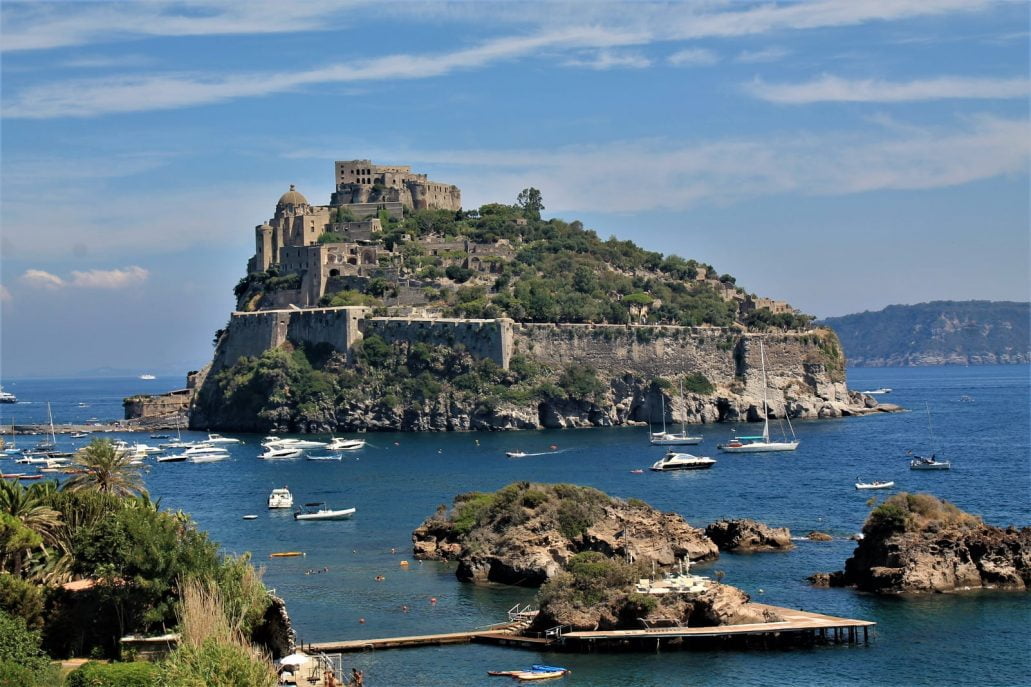
The first castle on the island of Ischia dates back to the V century BC. Later, after many historical events, the Aragonese – in the XV century – gave the fortress its current appearance, which looks like the Maschio Angioino of Naples. The castle stands on an islet and is connected by a 220 m long brick bridge to the ancient town of Ischia. The period of maximum splendor of the castle occurred at the end of the XVI century: at the time, the castle housed 1892 families, the convent of the Poor Clares, the abbey of the Basilian monks, the bishop, the seminary, the prince with his garrison. There were also 13 churches, including the cathedral. Today buildings cover a small part of the islet’s surface, which is mostly occupied by ruins, vegetable gardens, and vineyards.
Miramare Castle – Friuli Venezia Giulia

This elegant and refined castle was the Habsburg court’s residence: it was built between 1856 and 1860 in Miramare, not far from Trieste, as the home of Maximilian of Habsburg-Lorraine, Archduke of Austria and later emperor of Mexico, and his consort Charlotte of Belgium. Lapped by the Adriatic Sea waters, the castle is surrounded by a luxuriant park full of rare plants. In the park, there is also the “Castelletto” (little castle), a smaller building that served as a residence for the two royal spouses during the construction of the castle itself but which became, in fact, a prison for Carlotta when she lost her reason after the murder of her husband in Mexico. Inside, the castle is divided into numerous rooms and still retains the original furnishings. The ground floor was intended as the residence of Emperor Maximilian I and his wife, Carlotta. In contrast, the upper floor was later used as Duke Amedeo d’Aosta’s residence, who lived there for about seven years.
Castel dell’Ovo – Campania
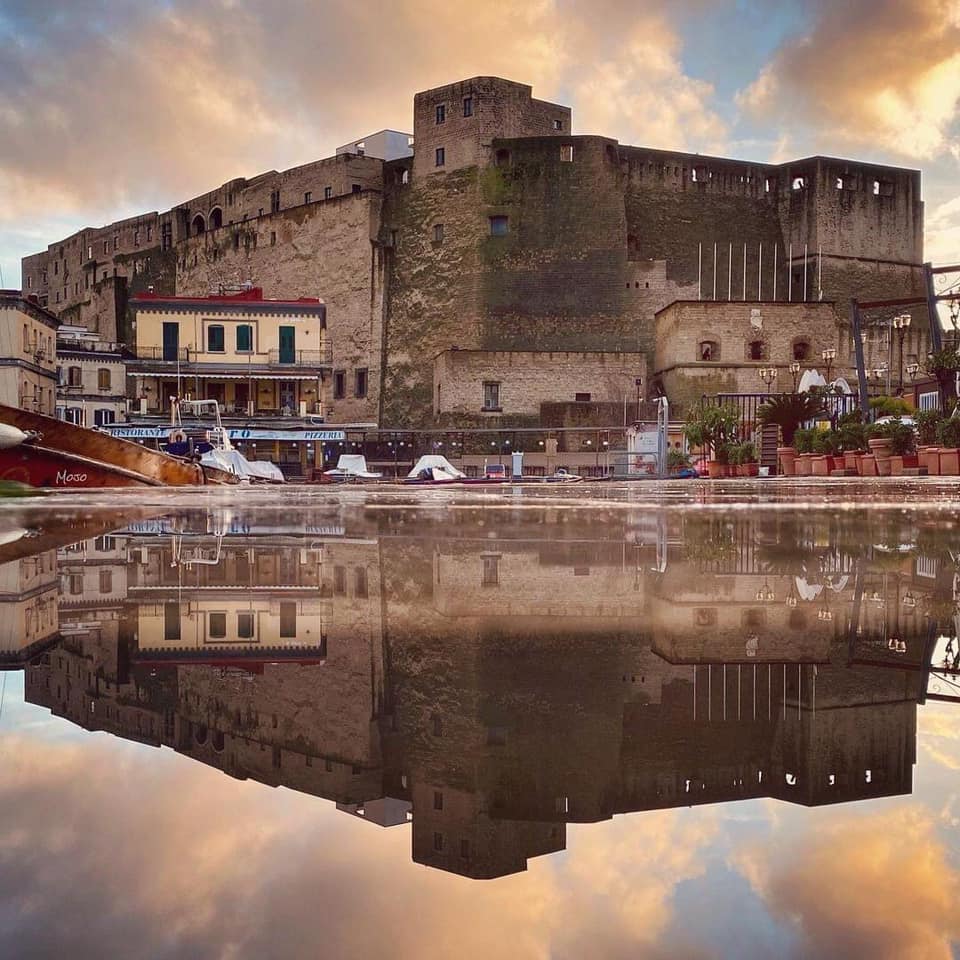
Castel dell Ovo is the oldest castle in Naples. Powerful and beautiful, it seems to derive its name from the legend of an egg placed in its foundations by the Latin poet Virgil: the egg keeps the whole structure up, and if by chance it were to break down, a series of catastrophes would begin for the whole city. The fortress stands on an islet of tuff, and its origin is lost in the mists of time: from the Romans to the Angevins, passing through Emperor Frederick II, this fort tells the great history of the city of Naples and beyond.
Castel Nuovo – Campania
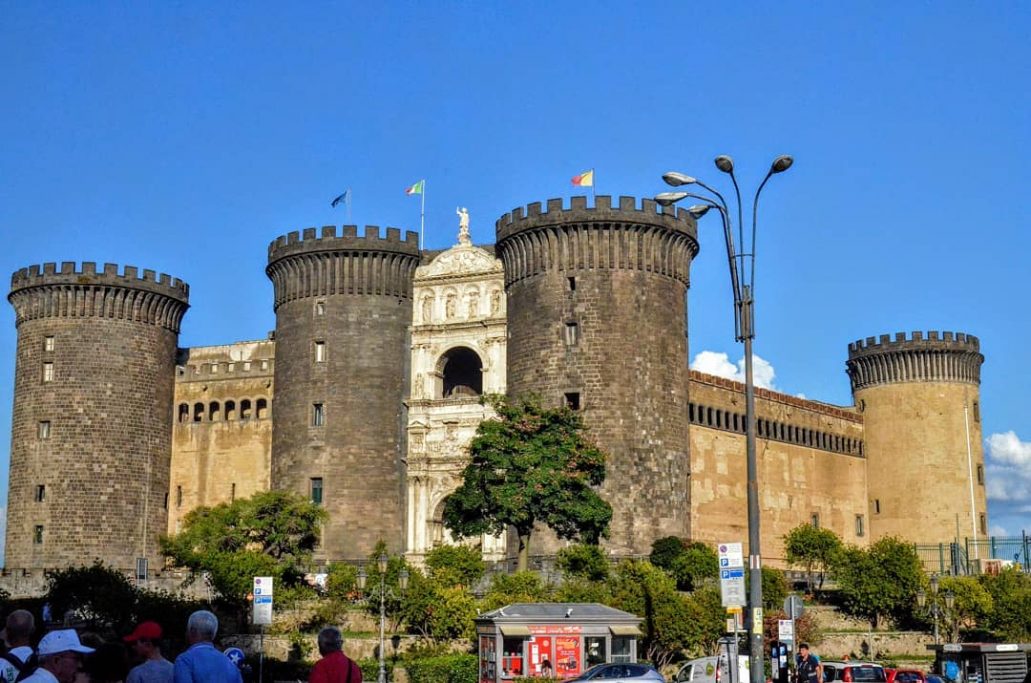
Also called “Maschio Angioino,” the imposing Castel Nuovo (New Castle) of Naples is one of the historic center’s main monuments, as well as one of the symbols of the city. Built-in the XIII century and enlarged in the XV century, the castle is characterized by late medieval and Renaissance architecture. The “New” castle was built to guard the city against enemy raids; in fact, the position in which it was built was of strategic importance. The castle shows itself today as a stratification of many eras, and today it hosts cultural events and shows. The castle is also the permanent seat of the Civic Museum and the library of the Neapolitan Society of Homeland History.
Fort of Bard – Aosta Valley
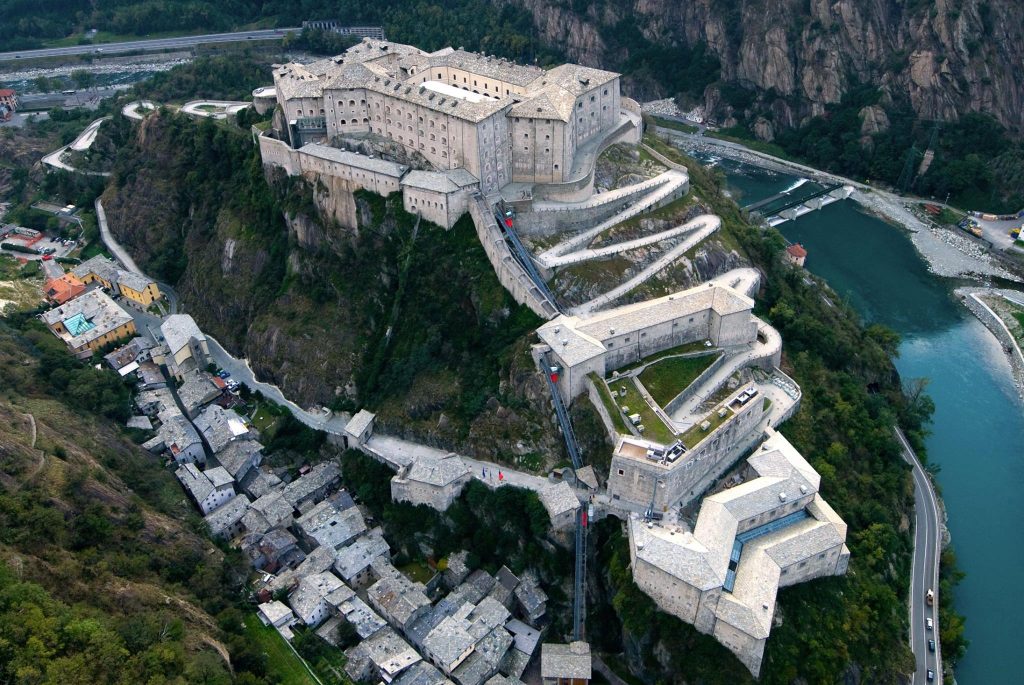
Bard is a beautiful town in the Aosta Valley dominated by a truly imposing Fort, an intact example of an early XIX century fortress. At the end of the XIX century, the fort began to decline, first used as a prison and then as an ammunition depot. Decommissioned in 1975 from the military state property, it was acquired by Aosta Valley Region in 1990 and completely renovated in 2006. The complex consists of three different buildings, located on three levels: a bulwark of almost 15,000 m of surface, inside the beautiful Museum of the Alps, dedicated to mountains. In addition to the Museum of the Alps, there are the prisons, which host a multimedia thematic itinerary on the history of the Fort.
Fenis Castle – Aosta Valley
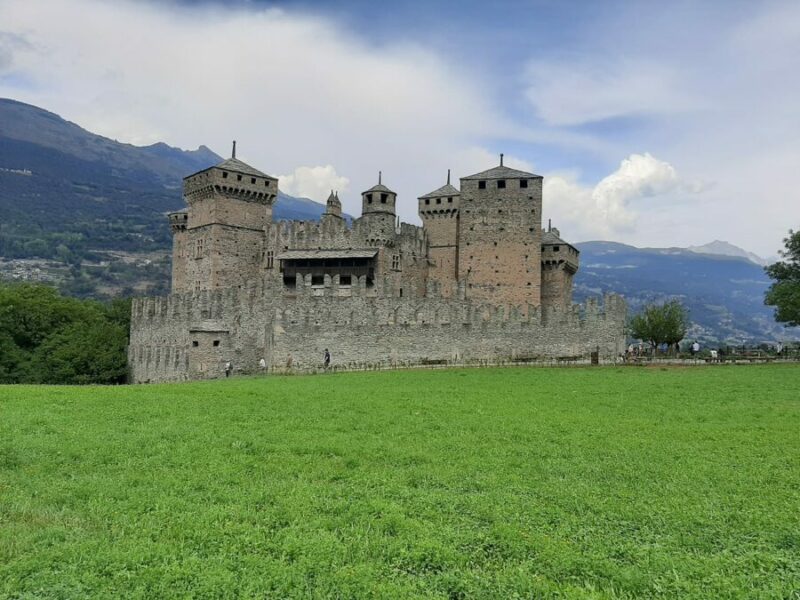
Another masterpiece to see in Aosta Valley is absolutely the Fenis Castle, one of Italy’s most famous and most beautiful manors. It has a pentagonal plan, with towers at each corner and a double enclosure of crenelated walls: a scenographic building which, combining the characteristics of the fortification with those of the noble residence, made it a prestigious representative place for the greatest exponents of the Challant family, who they endowed the castle with an imposing defensive apparatus, as well as elegant pictorial decorations, symbols of power and prestige. Today the building is owned by Aosta Valley Region and can be visited. The visit to the ground floor develops through the armory, the refectory for soldiers and servants, the pantry, and the kitchen with a large fireplace. Continue up to the first floor, where you can see the chapel with the adjoining boardroom, the lord’s bedroom, the great kitchen, the dining room, and the hall of justice.
Castel Sant’Angelo in Rome – Lazio
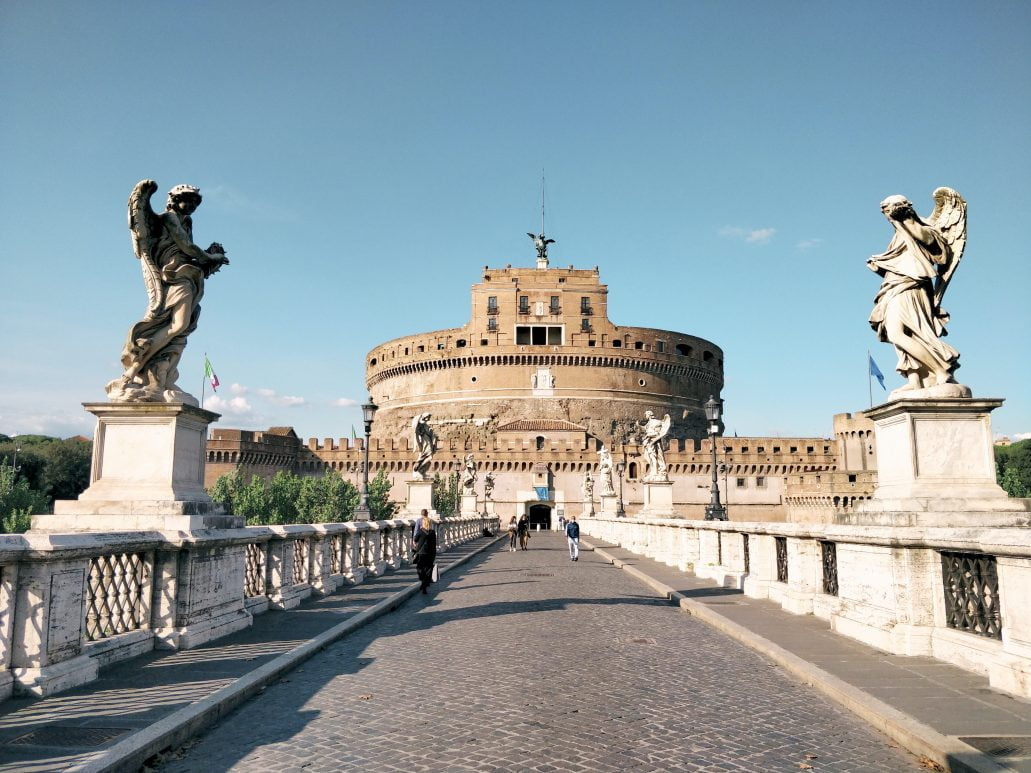
The Castle rises along the Tiber River and can be reached by crossing the famous Ponte degli Angeli (Angels’ bridge). Castel Sant’Angelo, also called Hadrian’s Mausoleum because it was born as a funeral monument of the emperor, was modified many times during the Middle Ages and the Renaissance until it reached its current appearance. It was a prison, a Renaissance residence, and a museum from a funerary monument to the fortified building.
Considered one of the leading Italian fortresses, Castel Sant’Angelo is also known for its proximity to Vatican City and being a witness to two thousand years of history. Over time, it has experienced the most disparate political and religious vicissitudes, mainly as a papal fortress and as a prison and barracks. Today it houses the Castel Sant’Angelo Museum, with its Renaissance halls, walkways, the library, the Treasure Room, and gardens.
Castel del Monte – Puglia
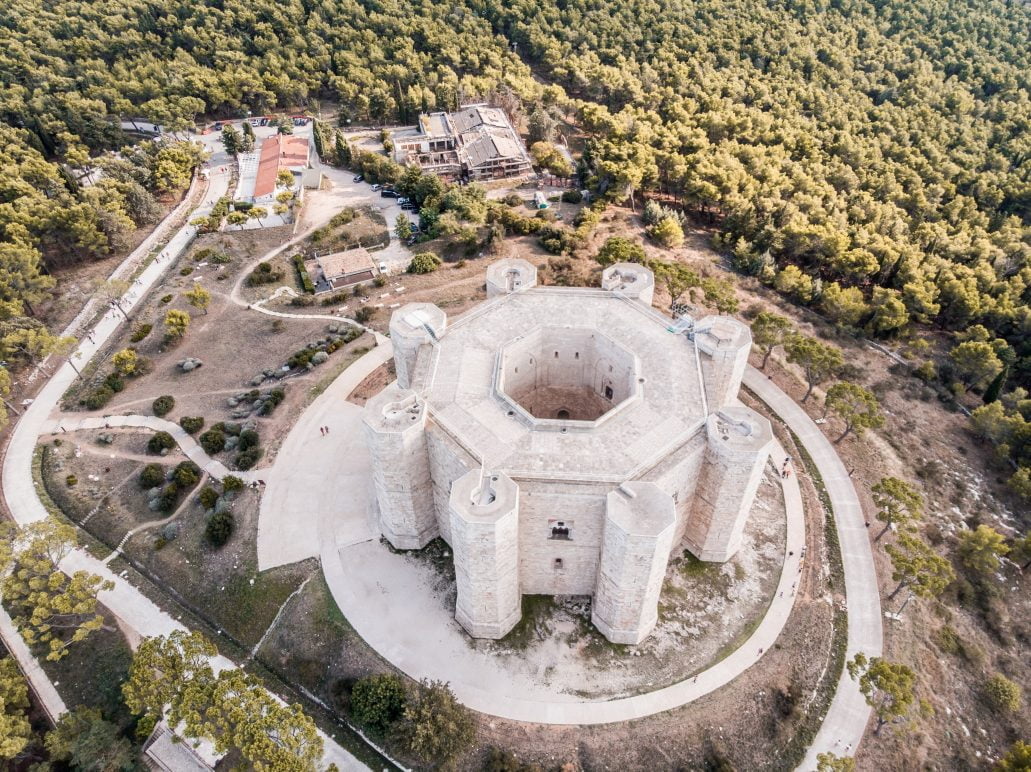
Wanted by Emperor Frederick II, Castel del Monte, in Andria, is one of Italy’s symbols, so much so that it has also been declared a World Heritage Site by Unesco. The castle has an octagonal plan, and again, the towers, at each of the corners, have an octagonal shape. The castle once enjoyed rich plant and mythological decorations. Simultaneously, the use of limestone, white marble, and coral breccia was specially designed for the chromatic effect that still strikes the visitor today. Infused with symbolism, this XIII century fortress lived through the troubled history of the Norman and Lombard conquests in Southern Italy and the Kingdom of Naples’ vicissitudes. The fortress can be visited freely and offers the visitor the opportunity to dive into the past of one of the most famous and important fortified structures in Italy.
Fortress of Brisighella – Emilia Romagna
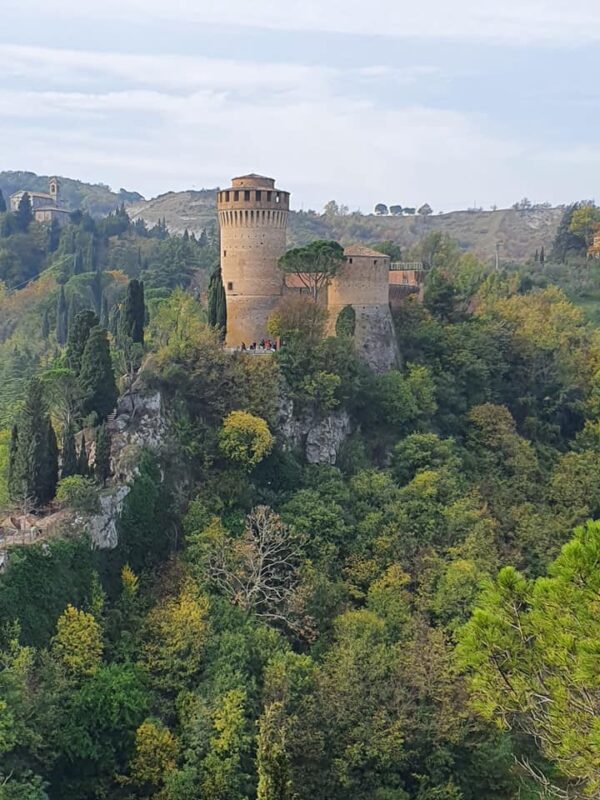
In Brisighella, a few kilometers from the city of Faenza, the majestic fortress stands, together with the Clock Tower, built in the XIV century by the Manfredi family, then passed to the Borgias, then to the Venetians, and finally to the Papal State. This building recalls the medieval centuries. Articulated around a vast internal courtyard with a trapezoidal shape, the fortress has two circular towers at the north-east and south-east corners, which flank the entrance, whose superimposed rooms have lent themselves to being set up as exhibition and multimedia spaces. In fact, today, the fortress is home to the museum dedicated to the relationship between man and plaster.
Bardi Castle – Emilia Romagna
In the province of Parma, the Castle of Bardi is one of the most significant examples of a medieval fortress in Italy and can be fully considered one of the most beautiful castles in Europe. The manor dates back to the IX century and is entirely made of stone; it is located on a hill, in a dominant position over the valley below. In addition, like all the best castles, even that of Bardi is associated with the legend of a ghost. According to some local inhabitants, in fact, the manor is haunted by the spirit of a handsome knight, who committed suicide on his return from the war after learning of the untimely death of his beloved woman.
Marostica Castle – Veneto
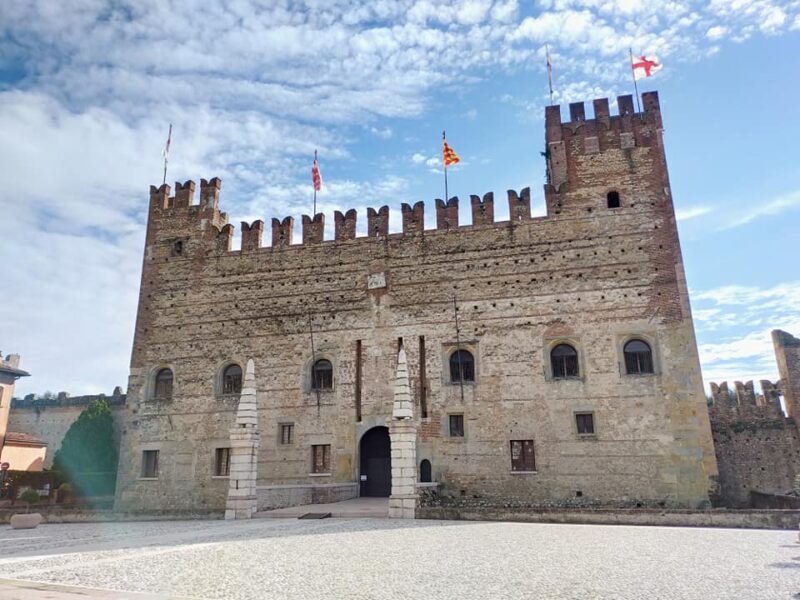
Marostica is a beautiful town in the province of Vicenza. Under the dominion of Cangrande della Scala, it was redeveloped. It took on the aspect it largely remains today, with the center within the walls that connect the two castles, the Upper Castle and the Lower Castle. Marostica is also famous worldwide for the Chess Game with Living Characters, an event that takes place every two years and involves about 600 characters in period costumes.
Gradara Castle – Marche
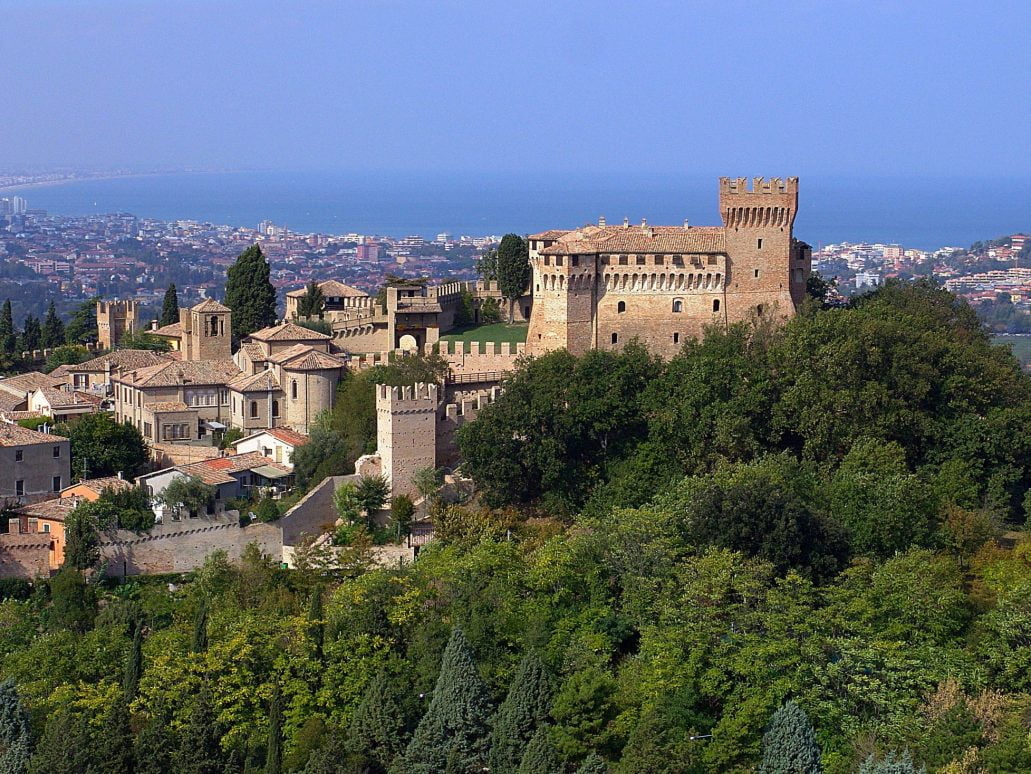
In the Marche region, in the province of Pesaro-Urbino, stands the fairytale village of Gradara, which develops around the Malatesta fortress, dating back to 1150 and the subject of successive extensions and renovations. The fortress and the adjacent village are protected by an external wall that extends for almost 800 meters, making the entire structure imposing. The village also offers enchanting views from its narrow streets and alleys that rise to the castle. Over time, the castle has gradually become one of the most visited monuments in the region and is home to museums, musical and artistic events.
Manta Castle – Piedmont
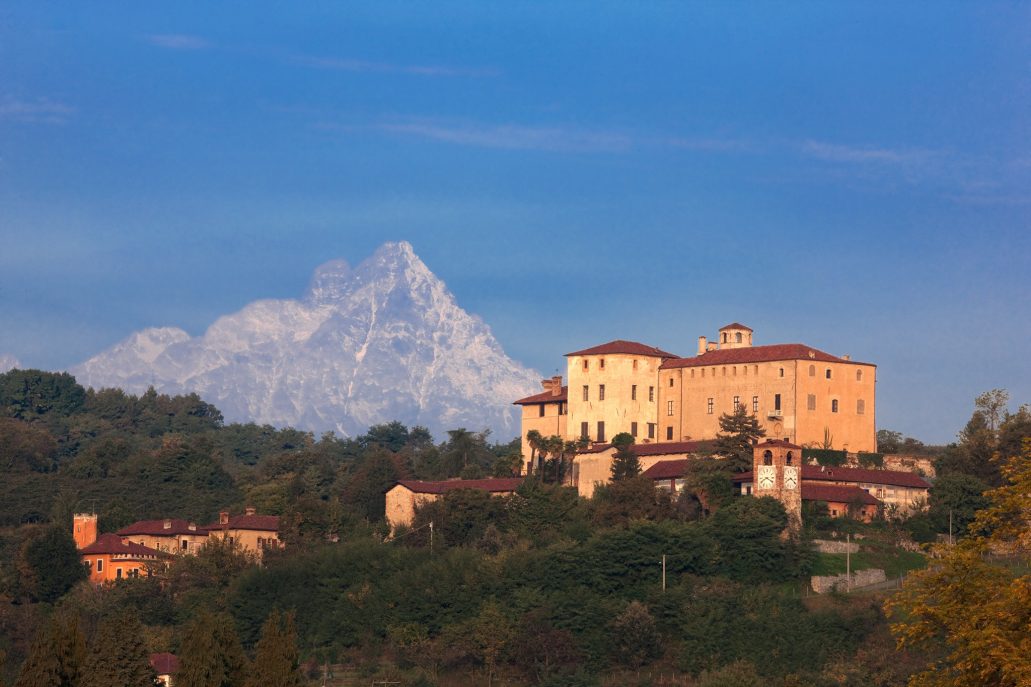
This spectacular medieval fortress at the foot of Mount Monviso deserves to be visited above all for the amazing late Gothic frescoes in its baronial hall. The paintings inspired by the tales of chivalry, in fact, leave you breathless and transport the visitor into a world of knights and bridesmaids. After exploring the fortress rooms and gardens, do not forget also to visit the castle church attached to the main building. Here, in fact, you can admire equally beautiful and well-preserved frescoes, this time obviously with a religious theme.
Gabiano Castle – Piedmont
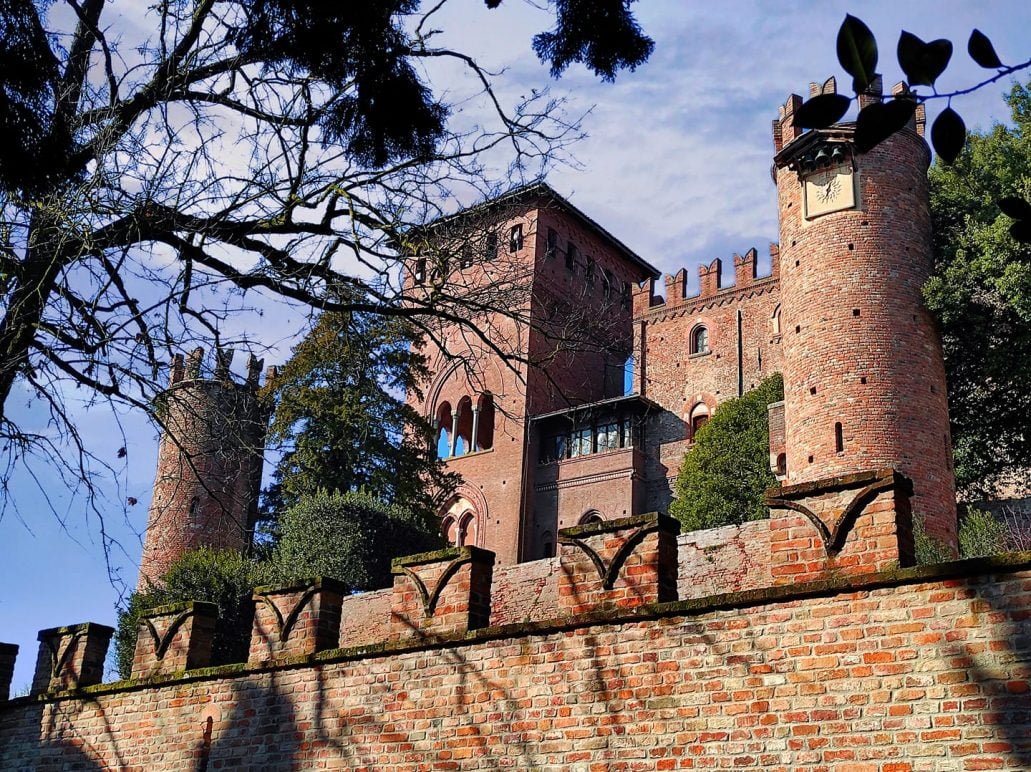
It is an ancient manor located on a hill, surrounded by vast lands and vines, in Alessandria. This majestic castle nestled among the gentle slopes of Monferrato, in fact, boasts a magnificent view over the surrounding valley and is particularly renowned for its wine production and the grandiose hedge maze of its historic garden. The location of the labyrinth in the heart of the park emphasizes the contrast between the rigid and geometric lines of the labyrinth and the natural park that surrounds it, recalling the medieval concept of a forest as a natural labyrinth and a labyrinth as an artificial forest where nature is rigorously manipulated and controlled by man.
Lucera Castle – Puglia
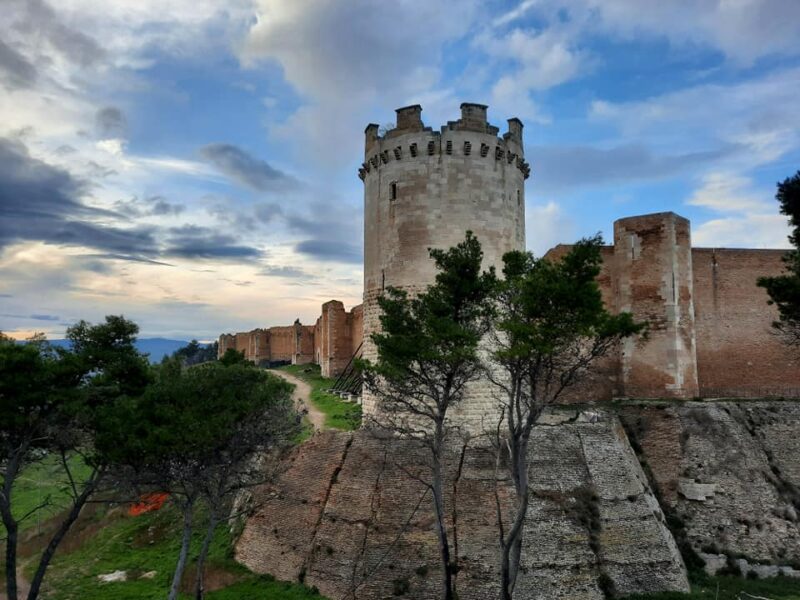
The Castle of Lucera is a magnificent Swabian-Angevin fortress in the province of Foggia, which dominates the surrounding area thanks to its elevated position. The central structure dates back to 1233, while the imposing external fortified walls are from just a later period. The castle’s mighty walls are certainly the most impressive component of the entire structure: 900 meters long, 13 meters high, and interspersed with numerous towers, buttresses, and bastions, it is clearly visible from many kilometers away. Finally, the entire hilly area on which the fortress rests is a very interesting archaeological area, with Neolithic and Roman remains.
Think your friends would be interested? Share “Beautiful Castles in Italy”!

